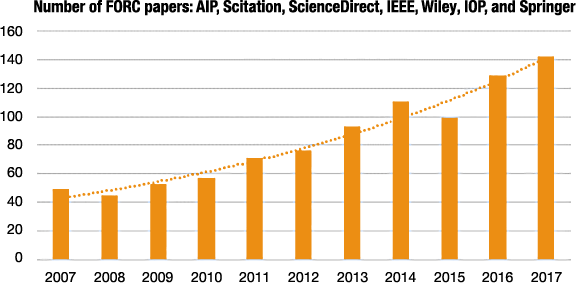A newly published Journal of Applied Physics paper details recent research of Washington State University’s Yue Cao, Mostafa Ahmadzadeh, Ke Xu, and Prof. John McCloy, and Lake Shore’s Brad Dodrill exploring the interactions of magnetic phases in multiphase systems.
As explained in the paper’s abstract:
Multiphase magnetic systems are common in nature and are increasingly being recognized in technical applications. One characterization method which has shown great promise for determining separate and collective effects of multiphase magnetic systems is first order reversal curves (FORCs). Several examples are given of FORC patterns which provide distinguishing evidence of multiple phases. In parallel, a visualization method for understanding multiphase magnetic interaction is given, which allocates Preisach magnetic elements as an input ‘Preisach hysteron distribution pattern’ (PHDP) to enable simulation of different ‘wasp-waisted’ magnetic behaviors. These simulated systems allow reproduction of different major hysteresis loop, FORC pattern, and switching field distributions of real systems and parameterized theoretical systems. The experimental FORC measurements and FORC diagrams of four commercially obtained magnetic materials, particularly those sold as nanopowders, shows that these materials are often not phase pure. They exhibit complex hysteresis behaviors that are not predictable based on relative phase fraction obtained by characterization methods such as diffraction. These multiphase materials, consisting of various fractions of BaFe12O19, ε-Fe2O3, and γ-Fe2O3, are discussed.
Experimentally, raw FORCs for the four BaFe12O19 samples were obtained using a Lake Shore 7400-S Series VSM, the forerunner to our more recently introduced 8600 Series VSM. (It should be noted that the 8600 Series, winner of a 2017 R&D 100 Award in the Analytical/Test category, was specifically designed to execute FORC measurements more quickly, easily, and with higher precision than the previous system.)
Because the FORC technique provides information regarding magnetic interactions and coercivity distributions in magnetic materials, information that cannot be obtained from a standard hysteresis loop alone, more and more researchers studying the magnetic properties of materials are exploring the utility of this technique. This trend can be seen in the graph below, which shows the number of FORC-related scientific papers published since 2007 from the cited sources:


